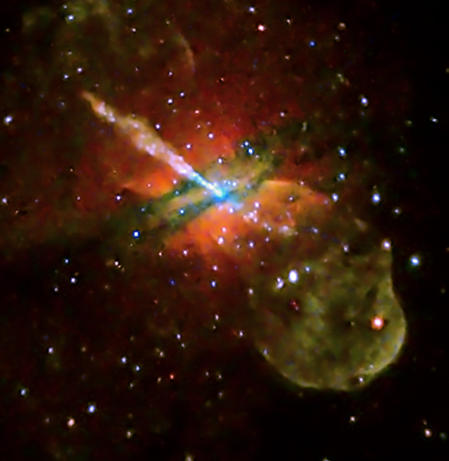FY3464: Quantum Field Theory IV 2020The lectures give an introduction into quantum field theory using path integral methods. Prerequisite is a good knowledge of quantum mechanics and special relativity; having followed "FY3403 Particle Physics" is useful but not necessary. Aim is an understanding of quantum field theory as the underlying structure of the standard model of particle physics and as an important working tool in statistical physics. Lecturer, time and place:Michael Kachelrieß, email; office: E3-126Lectures: Tuesday 08.15-10.00, E4-107. Lectures + Exercises: Thursday 14.15-16.00, E4-107. First lecture: Tuesday, January 7. |
 |
Topics covered:
- Path integrals in quantum mechanics
- Classical relativistic wave equations and field theory
- lambda phi4 theory
- Scattering
- Quantum electrodynamics, non-abelian gauge theories
- Renormalization
Plan of the lectures
Week 2: Principles of classical and quantum mechanics, path integral (1.1, 2.2).Week 3: Green functions in QM, oscillator; free scalar field, (2.3, 2.4, 3.1-2).
Week 4: propagator, Yukawa potential (3.2).
Week 5: free Green functions (3.3), Casimir effect (3.4), perturbation theory (4.1-2).
Week 6: perturbation theory (4.2), loop diagrams (4.3).
Week 7: loop diagrams (4.3), Symmetries (5.1-2).
Week 8: Symmetries (5.1-2), Weyl spinors (8.1), Dirac equation (8.1-2).
Week 9: Dirac equation (8.2).
Week 10: Dirac quantisation (8.3), Weyl/Majorana (8.4), S-matrix (9.1).
Week 11: LSZ (9.2), basics scattering (9.3.1)
Week 12: (non-) abelian gauge (10.1-2). Thursday: no lecture - home exam
Week 13: Tuesday no lecture - home exam. Thursday: QED+QCD (10.2.1)
Week 14: QCD (10.3)
Week 15: Easter break
Week 16: only Thursday: Anom. mag. moment (11.2)
Week 17: power-counting (11.3), renormalisation of phi^4 theory (11.4)
Week 18: renormalisation of phi^4 theory (11.4), outlook.
where e.g. (2.6) refers to the corresponding section in the lecture notes.
Pensum
The pensum is defined by the content of the lectures. We will follow roughly my lecture notes/book, see the link below. As alternatives, I suggest you to go to the library and to test several QFT books. Some recommend ones are- D. Bailin and A. Love, Introduction to Gauge Field Theory, Adam Hilger
[one of first books based on path integrals, still very readable] - M. Kachelriess, Quantum Fields: From the Hubble to the Planck Scale,
Oxford University Press.
For a freely available draft see here - M. Maggiore, A Modern Introduction to Quantum Field Theory, Oxford
University Press.
[clear and short, contains most of QFT1] -
T. Lancaster and S. Blundell, Quantum Field Theory for the gifted amateur,
Oxford University Press.
[very pedagogical introduction of basic concepts] - M. Peskin and D. Schroeder, Quantum Field Theory, Perseus Press.
[the "standard QFT" book of the 1990s] - L. Ryder, Quantum Field Theory, Cambridge University Press
- Schwartz, Quantum Field Theory and the Standard Model,
Cambridge University Press 2014.
[a good mixture of physical picture and detailed calculations] - M. Srednicki, Quantum Field Theory, Cambridge University Press.
For a freely available draft see
here
[the right book, if you want to get the factors i and 2 right...] - A. Zee, Quantum Field Theory in a Nutshell, Princeton University Press
[provides clear physical picture, but especially in later parts pretty sketchy.]
A home exam counts 33%, the final exam 67% to the mark.
The pensum is defined by the content of the lectures and the notes.
Lectures notes
You can download a script from here. If you find errors, let me know.Corrections:
Language corrections are welcome, but not listed below; see also the erratum of the book.Exercises
Week 2: Self-study of chapter 1 and 2.1 in the lecture notes.Week 3: exercises 1 and solutions.
Week 4: exercises 2 and solutions.
Week 5: exercises 3 and solutions.
Week 6: exercises 4 and solutions. plus sym. factors (plus one more example).
Week 7: exercises 5 and solutions.
Week 8: exercises 6 and solutions
Week 9: exercises 7 and solutions.
Week 10: exercises 8 and solutions.
Week 11: exercises 9
Week 13: exercises 10and solutions.
Home exam
The home exam is scheduled for the week 12/13. The exercises will be available Tuesday, 17.03, 10.00 after the lectures. Or you can download the exam here. Solutions should be handed in Thursday 26.03, latest 14.00, in the lecture, my mailbox (D5-166), or by email. Part of the home exam is the summary of sheet 9. Solutions are here.Exam
The final exam (67\%) of this course has been converted into a project. Deadline for the delivery of the project is May, 26 (the day of the planned exam). Three students at maximum can form a team. Submit a ranked list of favorite projects until April, 17. You may suggest also a suitable topic on your own -- I'll see if it fits. Proposed projects are described here ; Feynman rules for project 7 here .If you're interested in previous (written) exams:
- 2013 exam and solutions
- 2014 exam and solutions
- 2015 exam and solutions
- 2016 exam and solutions
- 2017 exam and solutions
- 2018 exam and solutions
Marks
A for those who participated, except B for 10013.Reference group
consists of all students; you can find some comments on lectures and the exam here.Useful links
The particle data group PDG is the authoritative source of information on elementary particles.The MadGraph page generates for you fortran code that does cross section calculations and generate events for standard model processes plus few extensions. (You have to register, and to run the produced code on your own computer.) Alternatively, you can download Madgraph from here and install it on your computer.
You can download CalcHEP from this page.

